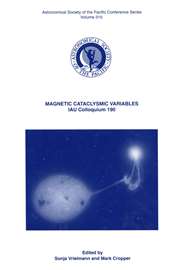No CrossRef data available.
Article contents
12CO(J = 1-0) Mapping of the Merging Galaxy NGC 3310
Published online by Cambridge University Press: 12 April 2016
Extract
Since molecular gas clouds in nuclear regions play important roles on both the intense star formation and fueling active galactic nuclei, a large number of molecular-line observations have been made for starburst, Seyfert, and merging galaxies. Recently, millimeter-wave arrays have been used to study circumnuclear molecular gas in merging galaxies. Most of them, however, have been devoted to the observations of more luminous objects such as ultra-luminous merging galaxies (ULMGs) discovered by IRAS (Sanders et al. 1988). In order to obtain a comprehensive understanding, it is necessary to study less-luminous merging galaxies. With this motivation, we present results of CO mapping of NGC 3310 which is one of less luminous merger candidates (L FIR = 2.5 × 1010 L ʘ).
The central region (5.1 kpc in diameter) of NGC 3310 was observed in CO(J = 1 − 0) using the Nobeyama Millimeter Array. The synthesized beam size was 6″.3 × 6″.1, which corresponds to 500 × 480 pc at the distance 16.3 Mpc. Our main results and conclusions are summarized as follows.
Information
- Type
- 3. Astronomical Results and Prospects
- Information
- Copyright
- Copyright © Astronomical Society of the Pacific 1994

